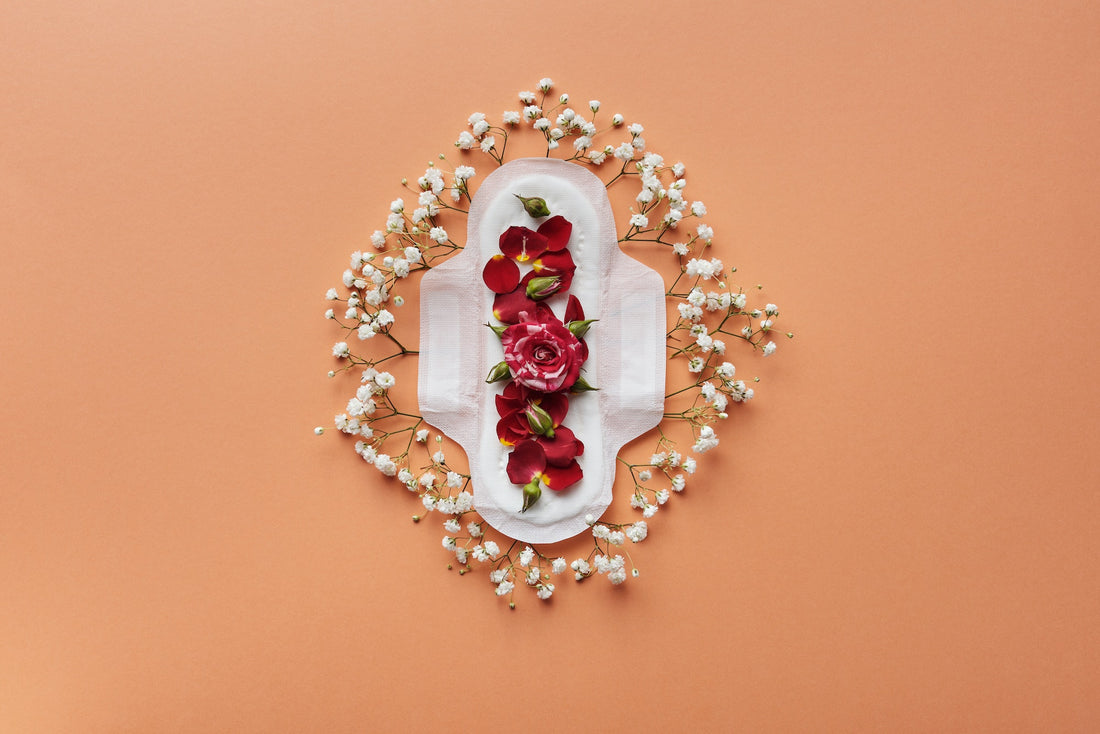Menstruation is an essential and unavoidable part of life (and creating life!), and though it may not be something you look forward to each month, your menstruation cycle is something you should understand to be able to take care of your overall health.
We believe menstrual health is something that should be discussed openly, and the AIMA team is committed to dismantling the menstruation taboo. Learn about menstruation cycle discharge, menstruation symptoms, and the types of menstrual products available to manage menstruation discharge.
What is Menstruation?
Menstruation, more commonly referred to as a ‘period’ or ‘time of the month’, is part of a monthly cycle during which the uterus in the human body sheds its inner lining. Blood and tissue flow out of the uterus, through the cervix and out of the body through the vagina. Some menstruators may also experience vaginal discharge before menstruation, which is completely normal. This white or yellowish discharge consists of fluid and cells being shed from the vagina.
Menstruation cycle discharge, or bleeding, is just one part of the monthly cycle. This monthly bleeding is brought on by hormonal changes in the body. During every month, the lining in the uterus builds up in preparation for a potential pregnancy.
When you don’t get pregnant, the levels of hormones called estrogen and progesterone begin to fall, which triggers the body to begin menstruation to shed the uterine lining. These same hormones may cause a variety of symptoms as they rise and fall throughout the menstrual cycle.
Read more: A Look At The Period Hormone Chart
Menstrual Symptoms and How to Manage Them
If you’re a menstruator, chances are that you’ve experienced at least one menstrual symptom along with your menstruation cycle discharge. Symptoms can be both physical and emotional and vary widely from person to person.
We’ve previously talked about some changes in mood, behaviour, and physical health that occur due to premenstrual syndrome (PMS) and premenstrual dysphoric disorder (PMDD). Here are some common physical and emotional symptoms that can go hand-in-hand with monthly cycle discharge.
Physical Symptoms That Accompany Menstruation Discharge
Physical symptoms that go along with your monthly cycle include period cramps, which can range from mild discomfort in the lower abdomen to intense period pain. Other symptoms include bloating, fatigue, backaches, and swollen and achy breasts. Some menstruators may experience diarrhea, constipation, acne, or headaches.
If you have other issues in the reproductive tract or gastrointestinal tract, physical symptoms may feel more painful during menstruation discharge. For instance, hemorrhoids and menstruation can combine to create increased pain or discomfort due to hormonal changes that make the anal and rectal areas more sensitive during this time.

Emotional Symptoms That Accompany Menstruation Discharge
Stress and the menstruation cycle may be linked for many menstruators. Emotional symptoms of your period include feelings of anxiety, restlessness, sadness, and irritability. For some, this may feel like mood swings, while for others, it may manifest as difficulty concentrating, having trouble falling asleep, and having a lower-than-normal sex drive.
How to Manage Menstrual Symptoms
There are several options available to get relief from menstrual symptoms that come with your monthly cycle phases. There are lifestyle changes you can adopt that help reduce both physical and emotional symptoms, including cutting back on caffeine and alcohol, getting regular physical exercise, eating a healthy diet rich in whole grains and vegetables, and making sure you get enough sleep.
For more severe physical symptoms such as intense period pain and abdominal cramps, many menstruators turn to over-the-counter non-steroidal anti-inflammatory drugs (NSAIDs) like ibuprofen. However, these can cause damage with prolonged use, which is why we recommend using a safe plant-derived alternative such as CBD suppositories that can provide effective, localized relief for period discomfort.
Types of Menstrual ProductsThere are plenty of products out there to manage your monthly cycle discharge, though some are more environmentally friendly than others. Here are a few options along with their advantages and disadvantages.
Sanitary PadsSanitary pads are a popular and convenient option for absorbing menstrual blood. They usually have an adhesive surface that allows you to stick them onto underwear to keep them in place to absorb menstrual cycle discharge. Unfortunately, conventional sanitary pads use a plastic liner, plastic packaging, and even plastic within the main pad to create a more absorbent material. Most commercially available pads are not biodegradable, which means when you dispose of them, they end up languishing in a landfill for years, adding to the waste problem. They can also be bulky, emit an odour, and cause a rash when not changed promptly.
Reusable cloth pads are more cost-effective than disposable sanitary pads since you can easily wash and reuse them. However, these do need to be replaced eventually and still present the problem of feeling bulky, having an odour, and causing rashes if you don’t change them often enough.
TamponsTampons are cylindrical products made of cotton that are inserted directly into the vagina to absorb menstruation discharge. These are popular because they are more discreet than pads, both to carry and while wearing. They also make it possible for you to swim on your period! However, these convenient little products create an incredible amount of waste, both from the tampon itself and the plastic applicators and individual wrapping of each one. Plus, using tampons involves a risk of toxic shock syndrome.
Menstrual CupsThese reusable products are flexible silicone or rubber cups in the shape of a funnel that are inserted into the vagina to catch menstrual fluid. The advantage of these is that they hold more blood than pads or tampons, meaning you can wear one for longer before needing to empty it (up to 12 hours depending on your flow).
These are also more eco-friendly than other options because they can be reused. They can also be worn with an IUD, are safer than tampons, and are affordable. The potential downside of menstrual cups is that it can be tricky to find the correct size and use them at first. They can be messy, and you need running water to empty and clean them out before reinserting them.
Read more: Can Having Sex Make Your Period Start and Vagina Pain During Period
AIMA is Breaking the Silence About Period Pain
Regardless of what type of period symptoms you experience or what methods you use to manage your menstruation cycle discharge, it’s important to normalize discussions about menstrual health.
The gender pain gap has been preventing menstruators from seeking comfort for period pain for far too long. Openly talking about periods is the best way to reduce the stigma around menstruation. We encourage you to seek out more resources and information for support with your menstrual health. Have questions or topics you would like more information about? Contact us and let’s break the silence together!
Editor: Lanna Last & Thomas Sauls


